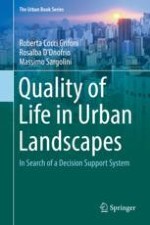2018 | OriginalPaper | Buchkapitel
27. Healthy Cities and Urban Planning: The QLandQLife Model as Input for Experimentation
verfasst von : Elio Trusiani
Erschienen in: Quality of Life in Urban Landscapes
Aktivieren Sie unsere intelligente Suche, um passende Fachinhalte oder Patente zu finden.
Wählen Sie Textabschnitte aus um mit Künstlicher Intelligenz passenden Patente zu finden. powered by
Markieren Sie Textabschnitte, um KI-gestützt weitere passende Inhalte zu finden. powered by
